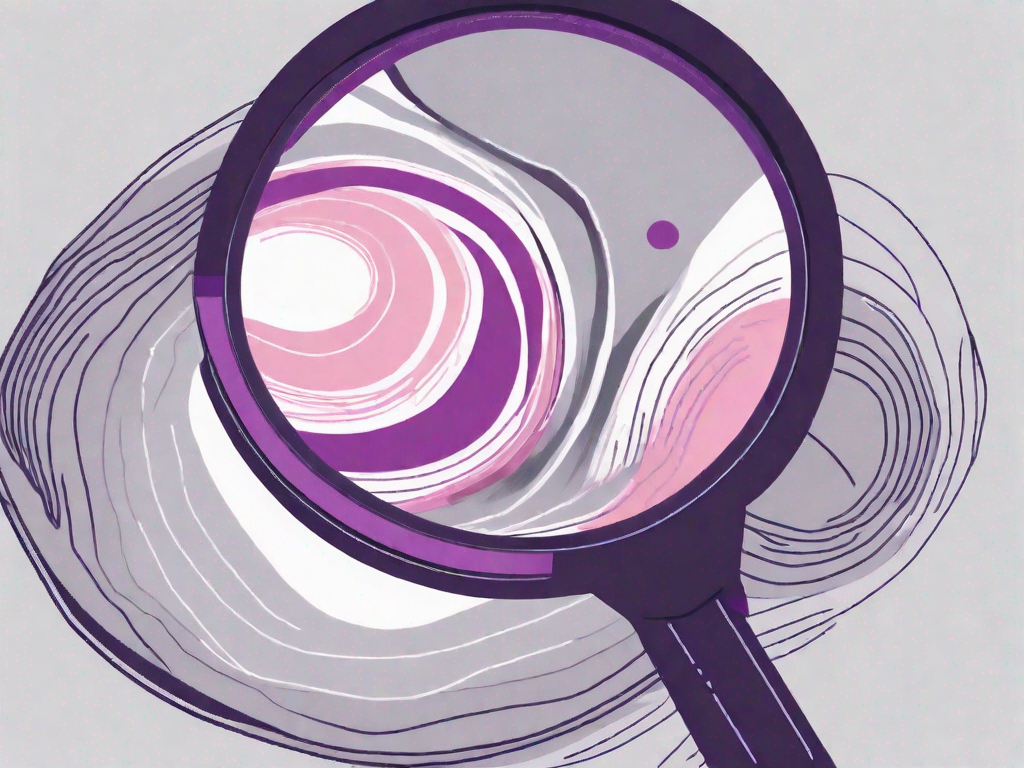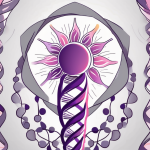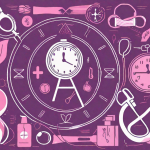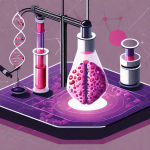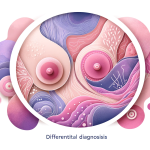This informative article stresses the importance of recognizing early symptoms of breast cancer, a critical step towards early detection and effective treatment. Breast cancer, a malignant tumor in breast tissue, is common in women but can also affect men. The article explains the complexity of the disease, influenced by genetic mutations, hormonal imbalances, and environmental factors. It underlines that early detection greatly improves treatment outcomes, emphasizing the role of mammograms and self-examinations in identifying early signs. Key warning signs include changes in breast size or shape, skin texture changes, nipple discharge, and unusual pain or discomfort. Additionally, non-physical symptoms like fatigue, weakness, and unexplained weight loss are highlighted. The article also discusses risk factors and lifestyle changes for prevention and underscores the importance of regular self-examinations and medical check-ups for early detection. A valuable resource, this guide empowers women to be proactive about their breast health, promoting awareness and vigilance in the fight against breast cancer.
Breast cancer is a condition that affects countless women around the world. It is crucial to understand the early symptoms of this disease in order to increase the chances of early detection and successful treatment. By recognizing the warning signs of breast cancer, you can take the necessary steps to protect your health and well-being.
Understanding Breast Cancer
Before diving into the early symptoms of breast cancer, it is important to have a basic understanding of what this disease entails.
Breast cancer is a malignant tumor that forms in the cells of the breast. It can develop in both men and women, although it is much more common in women. The tumor usually originates in the milk ducts or lobules of the breast and may spread to other parts of the body if left untreated.
When it comes to breast cancer, it is not just a simple case of abnormal cell growth. It is a complex disease that involves a multitude of factors. Genetic mutations, hormonal imbalances, and environmental factors can all contribute to the development of breast cancer. Understanding these factors can help researchers and medical professionals develop better strategies for prevention, detection, and treatment.
What is Breast Cancer?
Breast cancer occurs when abnormal cells in the breast divide and multiply uncontrollably, forming a tumor. This tumor can invade nearby tissues and potentially spread to other parts of the body through the lymphatic system or bloodstream.
But what exactly causes these cells to become abnormal in the first place? One common factor is genetic mutations. Certain genes, such as BRCA1 and BRCA2, are known to be associated with an increased risk of developing breast cancer. These genes normally help regulate cell growth and repair DNA, but when they are mutated, they can lead to uncontrolled cell division and the formation of tumors.
In addition to genetic mutations, hormonal imbalances can also play a role in the development of breast cancer. Estrogen, a hormone that is naturally produced in the body, can stimulate the growth of breast cells. If there is an excess of estrogen or an imbalance in the levels of other hormones, it can increase the risk of breast cancer.
The Importance of Early Detection
Early detection of breast cancer is crucial for successful treatment. When breast cancer is detected early, the chances of survival and effective treatment are significantly higher. Regular screening and self-examinations play a crucial role in detecting any abnormalities or early signs of breast cancer.
Screening methods such as mammograms, which are X-ray images of the breast, can help detect breast cancer at an early stage, even before any symptoms are present. These screenings can identify small tumors or other abnormalities that may not be noticeable during a physical examination.
Self-examinations are also important for early detection. By regularly examining your own breasts, you can become familiar with their normal appearance and easily identify any changes or abnormalities. If you notice any lumps, changes in size or shape, or other unusual symptoms, it is important to consult a healthcare professional for further evaluation.
Early detection not only increases the chances of successful treatment but also provides more treatment options. In the early stages of breast cancer, the tumor is often localized and has not spread to other parts of the body. This allows for more targeted treatments, such as surgery or radiation therapy, which can effectively remove or destroy the tumor.
Overall, understanding breast cancer and the importance of early detection is crucial for both men and women. By staying informed and proactive, we can work towards reducing the impact of this disease and improving the outcomes for those affected.
Recognizing the Early Symptoms
Being able to recognize the early symptoms of breast cancer can potentially save your life. It’s important to be vigilant and familiarize yourself with the warning signs.
1. Physical Changes in the Breast: One of the most common early signs of breast cancer is a noticeable change in the size, shape, or appearance of the breast. This may include swelling, dimpling, or puckering of the skin, as well as changes in the nipple, such as nipple inversion or discharge. It’s important to note that not all changes in the breast indicate breast cancer. However, any significant and persistent changes should be discussed with your healthcare provider for further evaluation.
2. Changes in Skin Texture: In some cases, breast cancer may cause a change in the texture of the skin on or around the breast. This can manifest as redness, thickening, or the development of a rash-like appearance. If you notice any unusual changes in the skin’s texture, it is important to seek medical advice for further evaluation.
3. Unusual Pain and Discomfort: While breast cancer is not typically associated with pain, it is essential to pay attention to any persistent or unexplained discomfort in the breast or underarm area. This can include tenderness, aching, or a sensation of heaviness. If you experience any unusual pain or discomfort, it is essential to consult a healthcare professional for a thorough examination.
4. Non-Physical Symptoms of Breast Cancer: Inaddition to physical changes, breast cancer can also manifest non-physical symptoms that should not be ignored.
5. Fatigue and Weakness: Ongoing fatigue and weakness that cannot be attributed to any other causes may be a potential symptom of breast cancer. If you find yourself feeling excessively tired, both physically and mentally, it is important to discuss this with your healthcare provider.
6. Unexplained Weight Loss: If you experience significant weight loss without any changes in diet or physical activity, it may be a sign of an underlying health issue, including breast cancer. Sudden and unexplained weight loss should not be ignored and warrants further investigation.
7. Risk Factors and Prevention: While certain risk factors for breast cancer, such as gender and age, cannot be changed, there are lifestyle modifications that can potentially reduce your risk of developing breast cancer.
8. Factors Increasing the Risk of Breast Cancer: Factors that may increase the risk of breast cancer include a personal or family history of the disease, certain genetic mutations, hormone replacement therapy, and long-term exposure to estrogen. It is essential to be aware of your risk factors and discuss them with your healthcare provider to determine the best course of action for prevention and early detection.
9. Lifestyle Changes for Prevention: Adopting a healthy lifestyle can play a significant role in reducing the risk of breast cancer. This includes maintaining a balanced diet, engaging in regular physical activity, limiting alcohol consumption, and avoiding tobacco use. Prioritizing self-care and overall well-being is essential in minimizing the risk of breast cancer.
10. When to Consult a Doctor: Regular self-examinations and medical check-ups are paramount in the early detection of breast cancer. It is crucial to understand when to consult a healthcare professional.
11. Regular Self-Examinations: Performing regular breast self-examinations can help you become familiar with the normal look and feel of your breasts, making it easier to identify any changes or abnormalities. If you notice anything unusual during your self-examination, such as a new lump or any other concerning symptoms, seek prompt medical attention.
Importance of Regular Medical Check-ups
In addition to self-examinations, it is essential to undergo regular medical check-ups and screenings as recommended by your healthcare provider. Regular screenings, such as mammograms and clinical breast exams, can help detect any signs of breast cancer even before symptoms become apparent. Early detection significantly increases the chances of successful treatment and positive outcomes.
In conclusion, understanding the early symptoms of breast cancer is crucial for early detection and treatment. It is important to be vigilant, pay attention to any changes in the breast or non-physical symptoms, and consult a healthcare professional if any concerns arise. By prioritizing regular self-examinations, medical check-ups, and adopting a healthy lifestyle, you can take control of your breast health and increase the chances of early detection and successful treatment. Remember, early detection saves lives.

